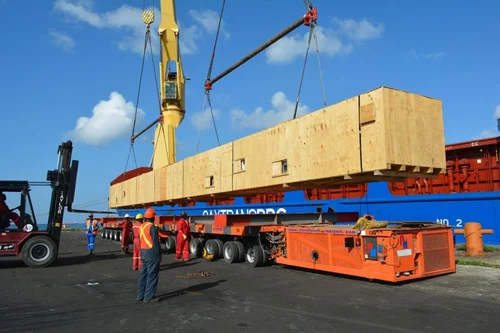
calendar_month July 02, 2024
Safety, security, speed, and significant costs are all at risk if over-dimension cargo is improperly handled
My experience in logistics has brought me face-to-face with the complexities of project cargo those oversized, critical pieces of equipment that drive industrial operations. While safety is paramount, accidents still occur, often with devastating consequences.
The Scope of the ProblemIn India alone, over 150 project cargo accidents have occurred in the last decade, ranging from minor mishaps to major disasters. Globally, countries like the US and China, with their booming industries, report even higher numbers, highlighting the inherent risks associated with project cargo transportation.
The Culprits: Equipment Failure, Weather, and Human ErrorSeveral factors contribute to project cargo accidents, but three primary culprits stand out:
Equipment FailureEquipment failure during lifting operations is a significant cause of accidents, accounting for about 40% of incidents. The sheer size and weight of project cargo can strain lifting equipment beyond its limits, leading to failures.
Adverse Weather ConditionsWeather conditions, particularly during sea or air transport, account for another 20% of accidents. Storms, high winds, and rough seas can create hazardous conditions that challenge even the most experienced logistics professionals.
Human ErrorA more concerning culprit is human error. Despite rigorous training and stringent protocols, mistakes happen. These can include:
1. Miscalculations:Incorrect weight, dimensions, or center of gravity assessments can jeopardize the entire operation.
2. Improper Rigging and Lashing:Using the wrong slings, shackles, or applying inadequate lashing tension can cause cargo to shift unexpectedly.
3. Communication Breakdowns:Misunderstandings during lifting or about lashing procedures can lead to accidents.
4. Fatigue and Complacency:Long hours and demanding schedules can lead to worker fatigue, increasing the likelihood of safety protocols being neglected.
Improper Cargo Balancing: An Often Overlooked ThreatBeyond human error, improper cargo balancing is a critical factor in many accidents. Poorly balanced cargo becomes unstable, especially on rough seas or uneven terrain, increasing the risk of shifting and accidents. It can strain the vessel or trailer, potentially causing equipment failures, and complicate loading and unloading operations, endangering personnel.
The Devastating Impact of Improper LashingInadequate lashing : the process of securing the cargo : can have severe consequences. Improperly secured cargo can shift dramatically during transport, causing collisions or damage to the vessel or trailer, and even breaking free, posing a serious safety hazard. Stressed lashings can also break, further compromising safety. These accidents not only cause delays but also incur significant costs due to repairs or replacements.
A Real-World ExampleA 2018 incident exemplifies these dangers. A cargo ship encountered rough seas with improperly tensioned chains. The cargo shifted, damaging the ship and endangering the crew. This incident, with its costly delays and repairs, highlights the importance of proper lashing practices.
Enhancing Safety in Project Cargo OperationsTo mitigate these risks, several steps can be taken:
1. Rigorous Training:Continuous training programs for workers on the latest safety protocols and techniques.
2. Advanced Technology:Utilizing advanced technology for precise weight, dimension, and center of gravity assessments.
3. Robust Communication:Ensuring clear and effective communication during all stages of the operation.
4. Proper Equipment:Regular maintenance and inspection of all lifting and securing equipment.
5. Fatigue Management:Implementing schedules that prevent worker fatigue and ensure adherence to safety protocols.
Together, we can enhance safety standards and ensure smoother, more secure operations in the logistics industry. Stay tuned for more articles on project cargo safety.